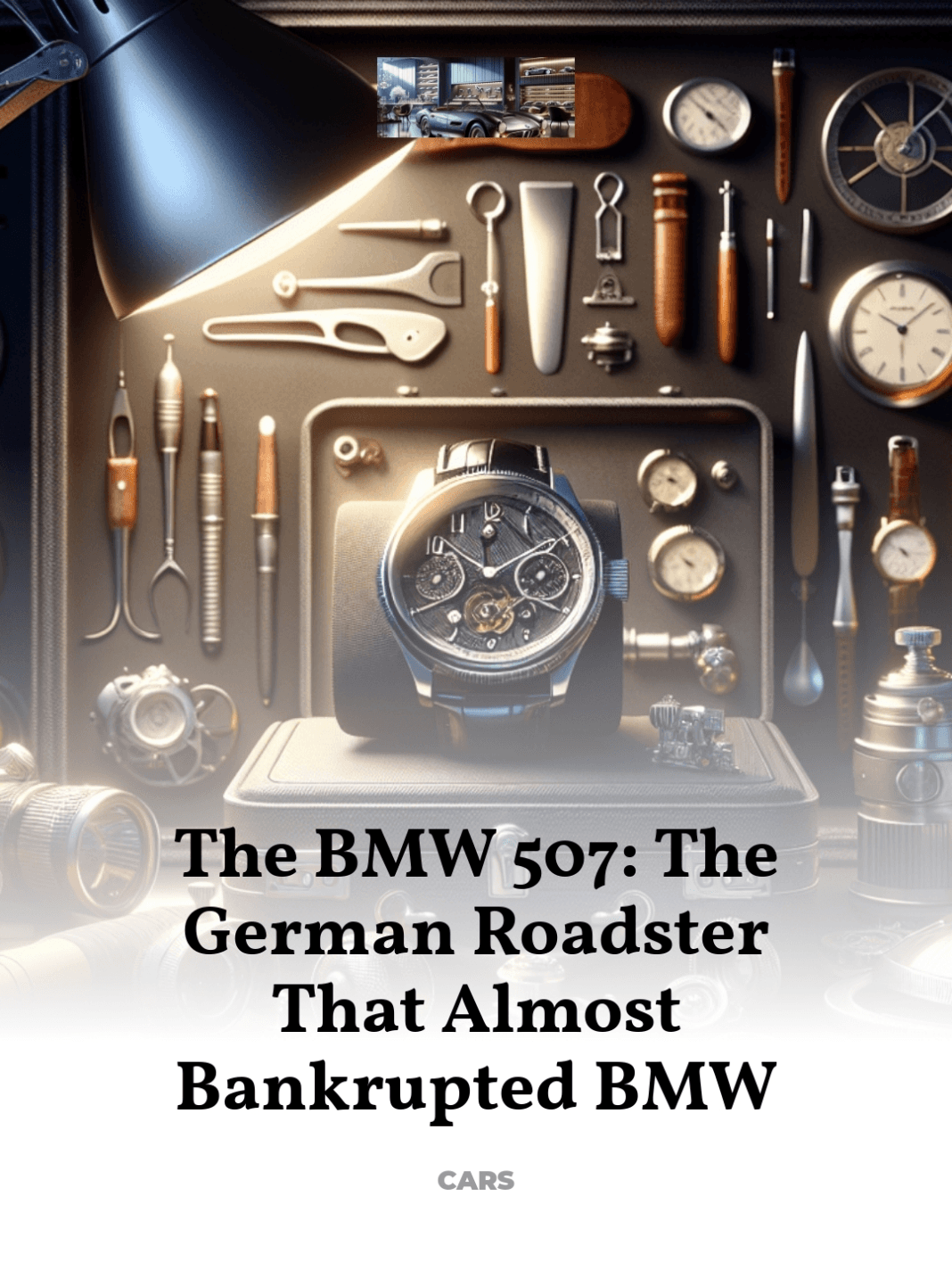The stunning car that gave Elvis Presley a taste for Bavarian engineering
The BMW 507 is not just a car; it’s a masterpiece of Bavarian engineering that captivated the likes of Elvis Presley and car enthusiasts around the world. This iconic roadster represents a pivotal chapter in automotive history, embodying luxury, innovation, and the art of car craftsmanship.
- The Genesis of the BMW 507
- Design and Innovation: The Hallmarks of the 507
- Cultural Impact and Celebrity Allure
- Legacy and Collectibility of the BMW 507
- Final Reflections on the BMW 507
The Genesis of the BMW 507
The story of the BMW 507 begins in the mid-1950s, a period marked by economic recovery and technological innovation in post-war Germany. BMW, known for its engineering excellence, embarked on a project to create a sports car that would bolster its image and market presence in the United States. The vision was clear: to craft a vehicle that combined performance with luxury, appealing to the elite and enthusiasts alike.
Designed by the legendary Albrecht Graf Goertz, the BMW 507 was unveiled in 1955 at the Frankfurt Motor Show. Its design was a departure from the more utilitarian styles of the era, featuring sleek lines, a curvaceous body, and an aesthetic that was both aggressive and elegant. Underneath its stunning exterior, the 507 was equipped with a 3.2-liter V8 engine, delivering impressive power and a top speed that could compete with the best in its class.
Challenges and Production Woes
Despite its beauty and engineering prowess, the BMW 507 faced significant challenges. Originally intended to be produced in large numbers to reduce costs, the reality was different. Each 507 was hand-built, which led to high production costs. This, combined with expensive materials and labor, resulted in a selling price much higher than initially anticipated, making it inaccessible to a broader market and placing financial strain on BMW.
Design and Innovation: The Hallmarks of the 507
The BMW 507 is often lauded for its breathtaking design, but its innovation goes beyond mere aesthetics. The roadster featured a lightweight aluminum alloy body and used a space frame chassis, which was advanced for its time and contributed to its excellent handling and performance.
The interior of the 507 mirrored its exterior in luxury and attention to detail. Leather upholstery, custom fittings, and a driver-focused cockpit made it a pleasure to drive and a symbol of status. The car’s design and engineering innovations set standards in automotive design and are still celebrated today.
Technical Specifications and Performance
Equipped with a 3.2-liter V8 engine, the BMW 507 produced approximately 150 horsepower, allowing it to reach top speeds of around 122 mph. It featured a four-speed manual transmission and had disc brakes, which were a novelty at the time and provided superior stopping power.
Cultural Impact and Celebrity Allure
The BMW 507 quickly became a symbol of sophistication and style. Its allure was magnified by its association with celebrities, most notably Elvis Presley, who owned two. Presley’s purchase of the 507 while stationed in Germany with the U.S. Army helped propel the car into the limelight, linking it forever with his legendary status.
The 507’s impact extended beyond celebrities; it captured the imagination of the public and motoring enthusiasts. It represented a blend of luxury, performance, and exclusivity that few cars of the time could match.
Elvis Presley and His 507
Elvis’s involvement with the BMW 507 is a storied part of its history. His first 507, originally white but painted red to disguise lipstick marks from fans, became as iconic as the man himself. This car was later discovered in a warehouse and meticulously restored to its original condition, symbolizing the enduring appeal of the 507.
Legacy and Collectibility of the BMW 507
Today, the BMW 507 stands as a monument to mid-century automotive design and engineering. With only 252 units produced, its rarity adds to its allure and collectibility. Each surviving 507 is a treasured piece for collectors, often fetching high prices at auctions and private sales.
The 507’s influence is evident in later BMW designs, including the Z8 and the modern 8 Series, which echo its aesthetic and spirit. The roadster remains a touchstone for discussions on automotive beauty and craftsmanship.
Preservation and Enthusiasm
The BMW 507 community is vibrant, with owners and enthusiasts dedicated to preserving its legacy. Clubs, exhibitions, and events around the world celebrate the 507, ensuring that its story continues to inspire future generations of car lovers.
Final Reflections on the BMW 507
The BMW 507 is more than just a car; it is a work of art and a piece of history. It embodies the spirit of its era and continues to be celebrated for its innovative design, superior craftsmanship, and cultural significance. The 507’s story is a testament to the enduring legacy of BMW’s commitment to excellence, a narrative that continues to captivate and inspire.
For further exploration of the BMW 507’s history and impact, visit authoritative sources such as the BMW Museum in Munich.



